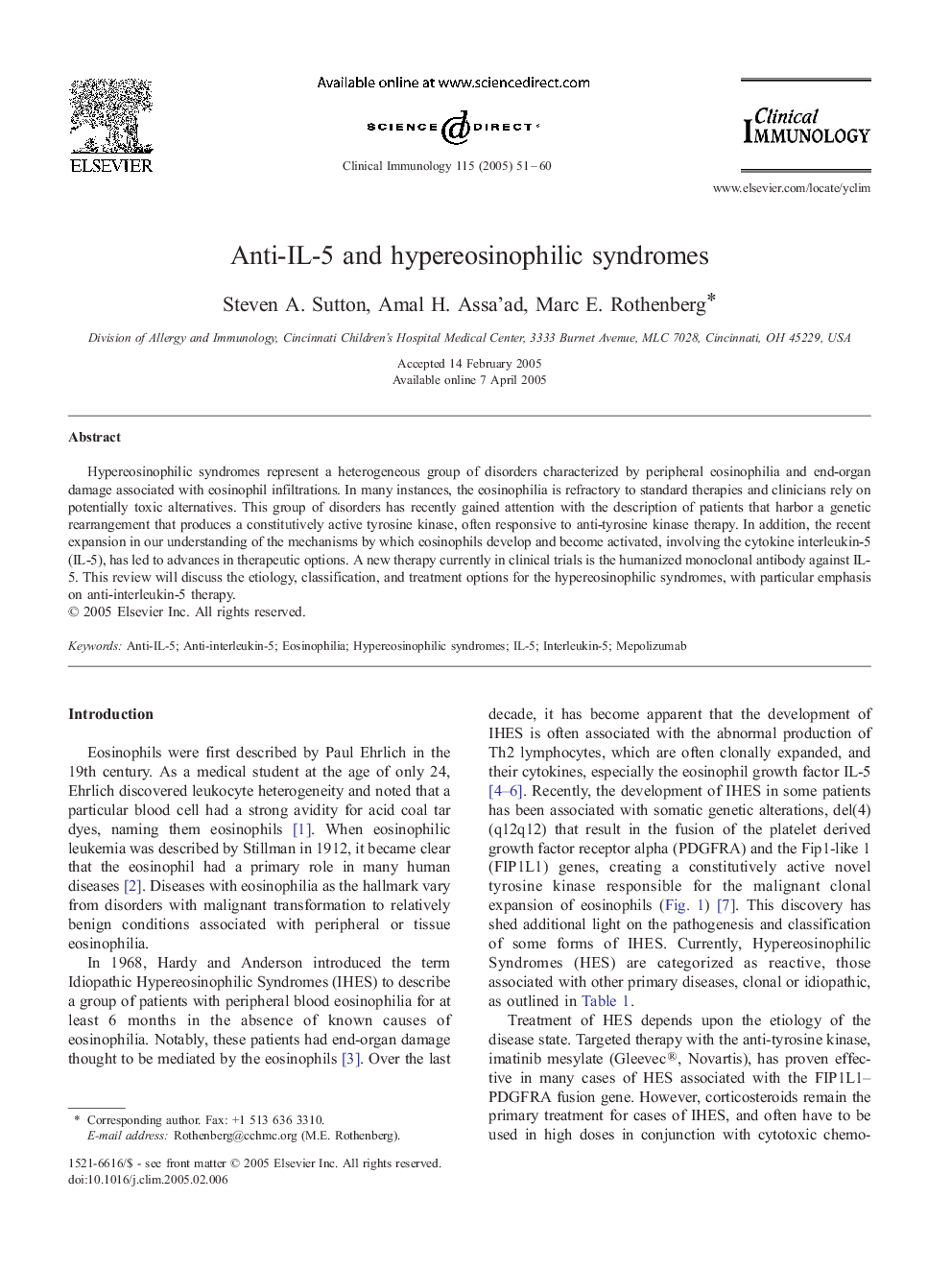| Article ID | Journal | Published Year | Pages | File Type |
|---|---|---|---|---|
| 9236586 | Clinical Immunology | 2005 | 10 Pages |
Abstract
Hypereosinophilic syndromes represent a heterogeneous group of disorders characterized by peripheral eosinophilia and end-organ damage associated with eosinophil infiltrations. In many instances, the eosinophilia is refractory to standard therapies and clinicians rely on potentially toxic alternatives. This group of disorders has recently gained attention with the description of patients that harbor a genetic rearrangement that produces a constitutively active tyrosine kinase, often responsive to anti-tyrosine kinase therapy. In addition, the recent expansion in our understanding of the mechanisms by which eosinophils develop and become activated, involving the cytokine interleukin-5 (IL-5), has led to advances in therapeutic options. A new therapy currently in clinical trials is the humanized monoclonal antibody against IL-5. This review will discuss the etiology, classification, and treatment options for the hypereosinophilic syndromes, with particular emphasis on anti-interleukin-5 therapy.
Related Topics
Life Sciences
Immunology and Microbiology
Immunology
Authors
Steven A. Sutton, Amal H. Assa'ad, Marc E. Rothenberg,
